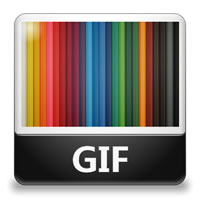Difference between GIF and PNG
Key difference: GIF stands for Graphics Interchange Format. The filename used for a GIF file is .gif or .GIF. GIF is a format mainly used for graphic images. PNG stands for Portable Network Graphics. It was created as an improved and non-patented replacement for Graphics Interchange Format (GIF).
 There are many different file formats available. Obviously, some are better used for some certain effects or reasons. But which is used for which? GIF and PNG are two such formats. They are both very similar in nature, however there are certain differences among the two.
There are many different file formats available. Obviously, some are better used for some certain effects or reasons. But which is used for which? GIF and PNG are two such formats. They are both very similar in nature, however there are certain differences among the two.
Both GIF and PNG are raster file formats, essentially a bitmap image. The term bitmap essentially means a map of bits or specifically a ‘spatially mapped array of bits’. The term bitmap is rooted in computer programming terminology. A bitmap images uses different colored pixels, which are arranged in a manner to display an image. Examples of bitmap images include .png, .psd, .jpg, .gif, .tif, or .bmp.
GIF stands for Graphics Interchange Format. The filename used for a GIF file is .gif or .GIF. GIF is a format mainly used for graphic images. The GIF was first introduced in 1987 and is still one of the popularly used formats on webpages. However, its popularity has been decreasing lately, especially after the introduction of PNG. PNG aimed to be an improvement over GIF and hoped to address the limitations of the older format. Nonetheless, PNG has not been able to usurp GIF’s position in animation, as PNG like most other formats, including JPEG, does not support animation.
GIF, on the other hand, supports up to 8 bits per pixel, or 256 colors. This is a very limited range of colors, and as such is generally not used for photographs. Formats such as JPEG can support up to 16.7 million colors, which allows JPEG to give a more accurate representation of real life. Instead, GIF uses similar colored pixels close together in an attempt to trick the eye.
GIF is a lossless compression, which means that all the data on the image is stored when the image is compressed, i.e. there is no change in resolution. However, this also means that a same image will end up taking more data space as a GIF file than say a JPEG image. GIF uses the Lempel–Ziv–Welch compression, also known as LZW compression.

PNG stands for Portable Network Graphics. It was created as an improved and non-patented replacement for Graphics Interchange Format (GIF). The PNG file format was published as an ISO/IEC standard in 2004. Hence, it is a generally and widely accepted format. A PNG file uses a file extension of .png or .PNG.
The PNG format was designed specifically for transferring images on the Internet. PNG supports palette-based images of 24-bit RGB or 32-bit RGBA colors, grayscale images, and full-color non-palette-based RGB images. It does not however support non-RGB color spaces such as CMYK. Hence it cannot be effectively used for professional-quality print graphics.
Unlike some other file formats, such as JPEG, PNG is a lossless data compression. This means that all the data on the image is stored when the image is compressed, i.e. there is no change in resolution. However, this also means that a same image will end up taking more data space as a PNG file than say a JPEG image. The PNG file would still take up less space than a PSD file, as a PSD contains more data as compared to a PNG file.
Furthermore, PNG supports image transparency, whereas many other types of formats do not. Transparency in image allows an image to be moved or copied onto any other background image.
Image Courtesy: softicons.com, iconarchive.com









Comments
Naveed
Sun, 03/25/2018 - 22:48
Add new comment